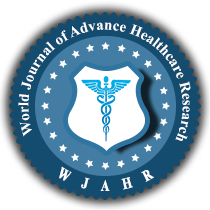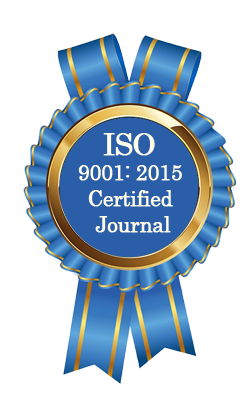| All | Since 2020 | |
| Citation | 105 | 60 |
| h-index | 4 | 4 |
| i10-index | 3 | 2 |
WJAHR Citation 
Login
News & Updation
Best Article Awards
World Journal of Advance Healthcare Research (WJAHR) is giving Best Article Award in every Issue for Best Article and Issue Certificate of Appreciation to the Authors to promote research activity of scholar.
Best Article of current issue
Download Article : Click here
Indexing
Abstract
OPTIMAL SUTURING TECHNIQUE FOR UTERINE INCISION DURING CESAREAN SECTION TO PREVENT THE INCIDENCE OF UTERINE ISTHMOCELE
*Tariq Khaddour, Ahmad Hasan Youssef and Louai Hassan
ABSTRACT
Background: uterine isthmocele is a hypoechoic area within the anterior uterine wall at the site of uterine incision during caesarean section with a depth greater than 2 mm. Large isthmocele were defined as those that occupy 50 to 80% of the myometrial thickness or that leave a residual myometrial thickness of less than 2.2 mm[1][4], resulting from a defect in the healing of the cesarean scar, which is a major concern for both doctors and patients because of its significant gynecological and obstetric complications such as abnormal uterine bleeding, dysmenorrhea, chronic pelvic pain, infertility, ectopic pregnancy, uterine rupture, and placenta previa. The importance of the study: Cesarean section is a common surgical procedure performed by obstetricians and gynecologists all over the world, and its rates have increased significantly in recent years. This led to an increase in associated complications, including uterine isthmocele, which has become one of the most common problems experienced by women after cesarean section, with a prevalence rate of more than 80%, according to international studies. The reason of the study: Several studies have investigated the independent risk factors associated with the occurrence of uterine isthmocele after cesarean section. In a study published in the American Journal of Obstetricians and Gynecologists in 2018, gestational diabetes, multiple caesareans, increased body mass index, amniotic sepsis, and retroversion of the uterus were all identified as independent risk factors for developing uterine isthmocele. In addition to factors related to the circumstances of childbirth, such as the length of labor time, the location of the incision on the uterus, and the type of suture used in suturing, in addition to other surgical steps such as closing the visceral and parietal peritoneum to prevent pelvic adhesions, which is still a topic of discussion that has not been resolved until now. The most important factor remains the type of uterine incision suture used, which ensures a good apposition of the two sides of the wound and sufficient blood supply for good scar healing. Therefore, it was necessary to find an ideal way to achieve these conditions to reduce the incidence of uterine isthmocele. Objective: The aim of this article is to determine the ideal method of suturing the uterine incision during cesarean section that can help prevent the occurrence of uterine isthmocele. We will discuss the results of recent studies on the types of sutures used to close the uterine incision during caesarean section. Methods: The study included patients with cesarean delivery in a randomized manner RCT in the Department of Obstetrics and Gynecology at Tishreen University Hospital in Lattakia, who met the inclusion criteria. The patients were divided into three groups: Group C: It consisted of 50 patients who had their uterus closed on a single full-thickness layer with a closure. The second group Group A: consisted of 50 patients whose uterus was closed in double layers, the first covering the inner two-thirds of the uterine muscle without including the deciduous membrane, with continuous locked sutures, without unfair tension, and a good and symmetrical apposition of the two sides of the wound. The second is a continuous suture without locking the superficial third of the muscle, including the visceral peritoneum. The third group, Group B: consisted of 50 patients whose uterus was closed in two layers, the first covering the inner two-thirds of the uterine muscle without including the deciduous membrane, with continuous sutures without locking without unfair tension, and a good and symmetrical apposition of the two sides of the wound. The second is a continuous suture without locking the superficial third of the muscle, including the visceral peritoneum.
[Full Text Article] [Download Certificate]
